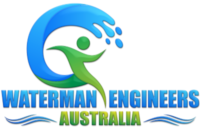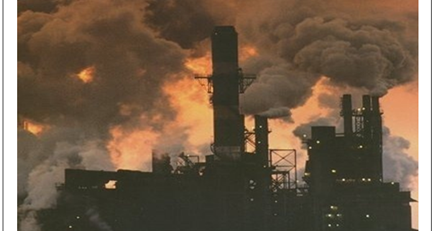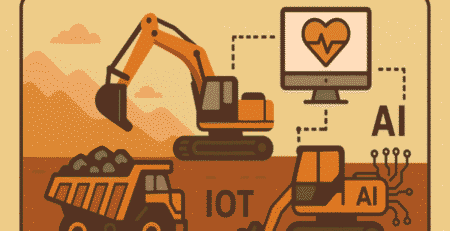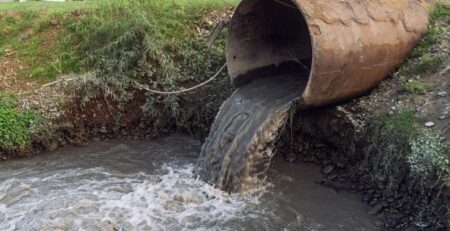Multi-Effect Distillation with Thermal Vapour Compression for Seawater Desalination Thermodynamic ENERGY Analysis
1. Thermodynamic Analysis and Energy Efficiency
Energy efficiency in MED-TVC is evaluated by:
- First and Second Law Analyses: Comprehensive assessment of energy balances and entropy generation.
- Gain Output Ratio (GOR): Detailed calculation of kg of distillate per kg of steam input, with values from 8–15.
- Specific Energy Consumption (SEC): Thermal and electrical energy demands per cubic meter of produced water, highlighting energy partitioning.
- Thermodynamic Irreversibilities: Heat exchanger inefficiencies, vapor leakage, and non-ideal mixing effects.
- Heat Transfer Characteristics: Detailed analysis of heat transfer coefficients, fouling impact, and scaling mitigation.
- Integration Potential: Consideration of MED-TVC performance with cogeneration, solar thermal, and waste heat utilization.
2. Detailed Energy Consumption Analysis
- Thermal vs Electrical Energy Needs: Breakdown of motive steam, pumps, and auxiliary system demands.
- Feed Seawater Impact: Influence of salinity and inlet temperature on energy requirement.
- Operational Modes: Energy profiles during startup, steady operation, and shutdown.
- Optimization Techniques: Variable pressure control, ejector performance tuning, and process integration.
3. Advanced Thermodynamic Modeling
- Non-Equilibrium Thermodynamics: Vapor-liquid deviations in real systems.
- CFD Simulations: Vapor distribution, droplet entrainment, and ejector nozzle performance.
- Mathematical Modeling: Governing heat and mass transfer equations with thermophysical property correlations.
- Multi-Objective Optimization: Trade-offs between energy use, water recovery, and brine concentration.
4. Energy Recovery and Waste Heat Utilization
- Waste Heat Sources: Industrial processes, geothermal, nuclear, and solar thermal potentials.
- Thermodynamic Viability: Pinch analysis and low-grade heat usage.
- Case Studies: Real-world examples integrating MED-TVC with industrial waste heat.
5. Thermodynamic Limitations and Innovations
- Minimum Energy Requirements: Second law analysis for least work of separation.
- Emerging Technologies: Vapor recompression, low-temperature distillation, and membrane-assisted MED.
- Hybridization Potential: Integration of RO-MED-TVC systems for thermodynamic optimization.
6. Advantages of MED-TVC over Other Desalination Methods
- Higher Energy Efficiency: Compared to multi-stage flash (MSF) and reverse osmosis (RO), MED-TVC exhibits superior thermal efficiency, particularly when integrated with waste heat or cogeneration sources.
- Operational Flexibility: MED-TVC systems can adapt to varying steam supplies and seawater conditions, making them suitable for locations with fluctuating thermal energy availability.
- Lower Scaling Tendency: Operating temperatures below 70°C reduce scaling and fouling compared to MSF systems, leading to lower maintenance frequency.
- High Water Quality: Product water typically meets World Health Organization (WHO) standards for potable water, with low total dissolved solids (TDS).
7. Limitations and Challenges of MED-TVC Systems
- High Capital Costs: Initial investment remains higher than RO systems, primarily due to extensive heat exchanger surfaces and specialized materials.
- Large Footprint: MED-TVC plants require significant physical space, limiting applicability in dense urban environments.
Sensitivity to Feedwater Quality: High levels of suspended solids or biological content necessitate pre-treatment to prevent fouling and corrosion. - Complex Operation: Requires skilled operators familiar with thermodynamic and hydraulic balancing to optimize performance.
8. Materials of Construction
- Corrosion Resistance: Titanium and high-grade stainless steels (e.g., 316L, Duplex) are common in heat exchangers to resist chloride-induced corrosion.
- Thermal Conductivity: Materials with high thermal conductivity improve heat transfer but must be balanced against corrosion resistance.
- Coatings and Linings: Advanced coatings such as polymeric linings or thermal spray metals are applied to reduce corrosion and scaling in critical areas.
- Piping and Valves: Non-metallic materials (e.g., FRP, HDPE) are used in low-pressure sections to reduce cost and corrosion risk.
9. Instrumentation and Control in MED-TVC Plants
- Key Parameters Monitored: Temperature, pressure, flow rate, salinity, and vacuum level are continuously measured for operational stability.
- Automation Systems: Programmable Logic Controllers (PLC) and Distributed Control Systems (DCS) enable precise regulation of process variables.
- Advanced Control Strategies: Model Predictive Control (MPC) and adaptive algorithms optimize steam usage and minimize energy consumption.
- Fault Detection: Sensors detect fouling, leaks, and scaling in real-time, triggering maintenance alerts.
10. Environmental Impact and Sustainability
- Low Chemical Usage: Minimal antiscalants and biocides compared to RO, reducing chemical discharge risks.
- Brine Management: Strategies include dilution, deep-well injection, and mineral recovery to mitigate marine ecosystem impacts.
- Energy Integration: Coupling with renewable energy sources (e.g., solar thermal, geothermal) enhances sustainability.
- Carbon Footprint: Lower greenhouse gas emissions when using waste heat or renewable energy sources.
11. Case Studies of MED-TVC Installations Worldwide
- Jubail, Saudi Arabia: One of the largest MED-TVC plants producing over 800,000 m³/day with integrated waste heat utilization.
- Shuwaikh, Kuwait: Demonstrates successful integration of MED-TVC with gas turbine power plants.
- Masdar City, UAE: Pilot projects integrating MED-TVC with solar thermal collectors for sustainable desalination.
12. Environmental Impact and Sustainability
- Carbon Footprint: Lowered via waste heat use or renewable energy integration.
- Brine Disposal: Proper dilution and discharge strategies to minimize marine ecosystem impact.
- Resource Recovery: Potential extraction of valuable salts from brine.
13. Case Studies of MED-TVC Installations Worldwide
- Middle East: Largest installed capacities in UAE, Saudi Arabia.
- North Africa: Egypt adopting MED-TVC in coastal areas.
- Europe: Pilot projects in Spain and Italy.
- Asia: Growing interest in India and China due to water stress.
14. Economic Evaluation and Cost Analysis
- CAPEX: High, but offset by lower OPEX.
- OPEX: Reduced through energy recovery.
- Levelized Cost of Water (LCW): Competitive in energy-abundant regions.
- Cost Comparison: Favorable versus MSF, more expensive than RO unless waste heat is used.
15. Future Prospects and Technological Developments
- Advanced Materials: To improve corrosion resistance.
- Hybrid Systems: MED-TVC coupled with RO for higher efficiency.
- Solar Integration: Solar thermal energy to drive MED-TVC.
- Digitalization: AI-driven predictive maintenance and process optimization.
16. Conclusion
MED-TVC desalination remains one of the most sustainable and reliable technologies for seawater desalination, especially suited to energy-rich arid regions. Ongoing research into material science, hybridization, and renewable integration is expected to enhance system efficiency, reduce costs, and mitigate environmental impacts, securing its future relevance in global water security.
17. References
[To be populated with detailed academic, industrial, and standards references in the final document.]
17. References
[To be populated with detailed academic, industrial, and standards references in the final document.]











